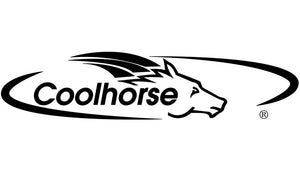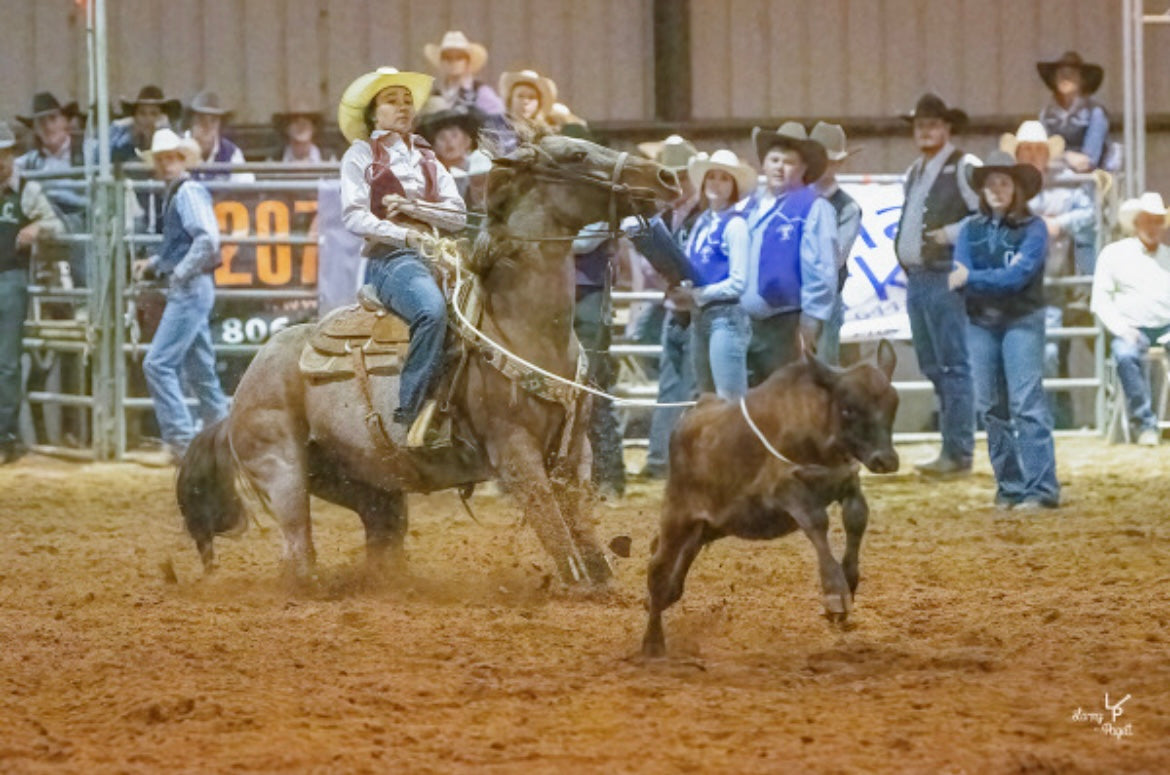Breakaway roping is a rodeo event that is a variation of calf roping, primarily involving speed and precision. Unlike traditional calf roping, in breakaway roping, the rider does not dismount the horse to tie the calf. Instead, the goal is to catch the calf as quickly as possible with a rope that is tied to the saddle horn with a breakaway string. When the calf is roped, the string breaks, and the time stops.
What to Know Before Starting Out
Equipment and Gear
- Rope: Select a breakaway rope designed for the event. It's generally lighter and more flexible than ropes used in other roping events.
- Saddle and Tack: Ensure you have a well-fitted saddle that properly fits your horse, and appropriate sports boots for a roping horse.
- Horse: A well-trained horse is essential. The horse should be accustomed to breakaway roping.
Mental Preparation
Mental Focus: Stay calm and focused. Developing a routine can help manage pre-competition nerves and improve performance.
1. Visualization
- Visualize each step your perfect breakaway roping run.
- Positive Outcomes: Focus on successful outcomes, imagining the breakaway rope breaking off from the saddle horn after you make the perfect breakaway roping run.
2. Goal Setting
- Short-term Goals: Set achievable goals for each practice session, such as improving your throw accuracy or decreasing your reaction time.
- Long-term Goals: Define your long-term objectives, like competing in a specific event or reaching a certain performance level. Break these down into smaller, manageable steps.
Selecting the right rope for you
Choosing the right breakaway rope is crucial for improving your performance and ensuring you have a successful and enjoyable experience. Here are some key factors to consider when selecting a breakaway rope:
1. Length
- Standard Length: Breakaway ropes typically range from 22 to 28 feet in length.
- Length of your breakaway rope is truly up to you! It is important to find the breakaway rope length that works the best for you and your horse.
2. Diameter and Weight
- Diameter: Ropes come in various diameters, generally measured in millimeters. Thicker ropes offer more control but can be heavier, while thinner ropes are lighter and faster. Thinner ropes may be easier for beginners to learn to properly swing. While more experienced breakaway ropers may prefer a little thicker breakaway rope.
- Weight: The weight of the rope can affect your throw and control. Lighter ropes may be easier to swing quickly, while heavier ropes provide more stability but can be slower. Weight of a rope could be a personal preference or dependent on experience.
3. Lay (Flexibility)
- Soft Lay: More flexible and easier to handle, suitable for beginners or those who prefer a softer feel.
- Medium Lay: A balanced option offering a mix of flexibility and stiffness, good for intermediate ropers.
- Hard Lay: Stiffer and holds its shape better, preferred by advanced ropers who need more precision and control.
4. Personal Preference and Style
- Feel and Comfort: The rope should feel comfortable in your hands. Try different ropes to see which one feels best.
- Roping Style: Your roping style can influence your choice. Experiment with different ropes to find the one that complements your technique.
5. Brand and Quality
- Reputation: Choose ropes from reputable brands known for their quality and consistency.
- Reviews and Recommendations: Read reviews and seek recommendations from experienced ropers or coaches.
Practical Tips:
- Regular Maintenance: Take care of your rope by keeping it clean and storing it properly in a breakaway rope can or breakaway rope bag.
- Whenever it is time for a new rope, is totally up to you! Whenever the breakaway rope is harder to perform with, it may be time for a new one.
Learning the Ropes
Study the Key Aspects of the Rules
- Starting and Timing: Understand how the run starts, the role of the barrier, and how timing is calculated.
- Legal Catch: Learn what constitutes a legal catch. Typically, the rope must go over the calf's head and catch cleanly.
- Breaking the String: The run ends when the rope breaks free from the saddle horn. Knowing the specifics of how the breakaway string works is crucial.
- Penalties and Disqualifications: Familiarize yourself with common penalties (e.g., breaking the barrier, missing the calf) and actions that lead to disqualification.
Beginning to Rope the Ground Dummy
When beginning breakaway roping, working with a ground roping dummy is an excellent way to develop fundamental skills before moving on to live calves. Here are key aspects to focus on:
1. Rope Handling
- Grip: Ensure you have the correct grip on the rope. Hold the loop in your dominant hand and the coils in your non-dominant hand.
- Swing: Practice your swing motion. Keep your elbow up, and maintain a consistent, smooth swing. Focus on developing muscle memory for a steady, controlled swing.
- Building a Loop: Practice building your loop quickly and efficiently. This includes gathering coils and forming the loop.
2. Target Practice
- Aim: Work on aiming the loop accurately at the head of the dummy. Your goal is to consistently place the loop over the dummy’s head.
3. Rope Mechanics
- Loop Size: Experiment with different loop sizes to find what works best for you. Generally, a slightly larger loop can be easier to handle for beginners.
- Coils: Practice managing your coils. Ensure they are organized and free of tangles for a smooth release.
4. Mental Focus
- Concentration: Practice maintaining focus throughout your practice sessions. Concentrate on each throw, and learn to block out distractions.
- Patience: Be patient with yourself. Mastery takes time, so focus on gradual improvement rather than immediate perfection.
Sample Drills:
- Stationary Dummy Drill: Stand at varying distances and practice throwing at a stationary dummy. Focus on accuracy and consistency.
- Moving Dummy Drill: Use a moving dummy to simulate a live calf. This helps with timing and adjusting your throw based on the dummy’s movement.
Practice Techniques:
- Daily Practice: Consistent daily practice is key. Even short, focused sessions can lead to significant improvement over time.
- Video Analysis: Record your practice sessions to review your technique. This can help you spot areas for improvement that you might miss in real-time.
- Feedback: Seek feedback from experienced ropers or a coach. They can provide valuable insights and tips to help you refine your technique.
Beginning to Breakaway Rope on Horseback
Transitioning from practicing on a ground roping dummy to breakaway roping on horseback is a significant step that requires additional skills and preparation. Here are key aspects to focus on when starting breakaway roping on horseback:
1. Horse Selection and Training
- Trained Horse: Use a well-trained, experienced horse familiar with breakaway roping. An experienced horse can compensate for some beginner mistakes and help build your confidence.
- Behavior: Work on your horse’s responsiveness to cues and commands. The horse should stay calm in the box, break cleanly, and stop quickly when the rope rope is thrown.
2. Roping Mechanical Dummy
- Begin Roping the calf roping sled or mechanical dummy on your horse before roping live cattle.
3. Rider Positioning and Balance
- Seat: Maintain a balanced seat in the saddle. Sit upright and keep your weight evenly distributed.
- Stirrups: Adjust your stirrups to a comfortable length that allows you to stand slightly when the horse breaks out of the box.
- Hand Position: Keep your non-rope hand steady on the reins for control, while your rope hand is ready to swing.
4. Box Work
- Box Positioning: Practice positioning your horse correctly in the box. The horse should be calm and square to ensure a clean break.
- Cueing the Horse: Use consistent cues to signal your horse to break out of the box. Practice smooth, controlled starts to prevent false starts or hesitations.
5. Chasing The Calf
- Positioning: Learn to position your horse correctly relative to the calf. Stay close enough to make an accurate throw but not so close that you crowd the calf.
- Speed Control: Control your horse’s speed to match the calf’s pace. Practice varying your speed to stay in perfect roping position.
6. Positioning Drills
- Box Drills: Practice entering, positioning, and exiting the box smoothly. Focus on keeping your horse calm and responsive.
- Tracking Drills: Use a mechanical dummy or a slow-moving calf to practice tracking and positioning your horse.
7. Seek Guidance
- Experienced Ropers: Learn from experienced breakaway ropers. Their insights and tips can be invaluable.
- Coaching: Consider hiring a coach to provide personalized instruction and feedback.
- Video Analysis: Record your practice sessions to review your technique and identify areas for improvement, and seek feedback from peers.
Becoming a Competitive Breakaway Roper
Becoming a competitive breakaway roper involves dedication, practice, and a thorough understanding of the sport. Here are key aspects to focus on as you work towards competitiveness:
1. Advanced Roping Skills- Accuracy and Speed: Continually refine your roping accuracy and speed. Consistent practice on both ground dummies and live calves is crucial.
- Roping Techniques: Master various roping techniques and adapt to different scenarios. Practice catching calves from different positions and angles.
- Fitness: Maintain a high level of physical fitness. Strong core muscles, good balance, and overall strength are important for effective roping and riding.
- Endurance: Work on your endurance to handle the demands of multiple runs in a competition setting.
- Focus and Concentration: Develop techniques to maintain focus and concentration during competition. This can include visualization, mindfulness, and positive self-talk.
- Stress Management: Learn to manage competition stress. Practice breathing exercises, maintain a routine, and stay relaxed.
- Local Competitions: Start by competing in local events to gain experience and build confidence.
- Varied Competitions: Compete in different rodeos to adapt to various environments, rules, and competition levels.
- Study Competitors: Watch and learn from top breakaway ropers. Analyze their techniques, strategies, and how they handle different situations.
- Develop a Plan: Have a clear game plan for each run, including your approach, timing, and how you handle different scenarios.
6. Equipment and Gear
- Quality Gear: Invest in high-quality roping gear. This includes a suitable breakaway rope, a well-fitted saddle, and other necessary tack.
- Maintenance: Regularly check and maintain your equipment to ensure it’s in top condition for competition.
7. Continuous Learning and Improvement
- Clinics and Workshops: Attend clinics and workshops to learn from top ropers and coaches. These can provide new techniques and training methods.
- Feedback Loop: Continuously seek feedback from coaches, mentors, and peers. Use this feedback to make adjustments and improvements.
- Self-Evaluation: Regularly review your performances, identify areas for improvement, and set goals for each practice session and competition.

